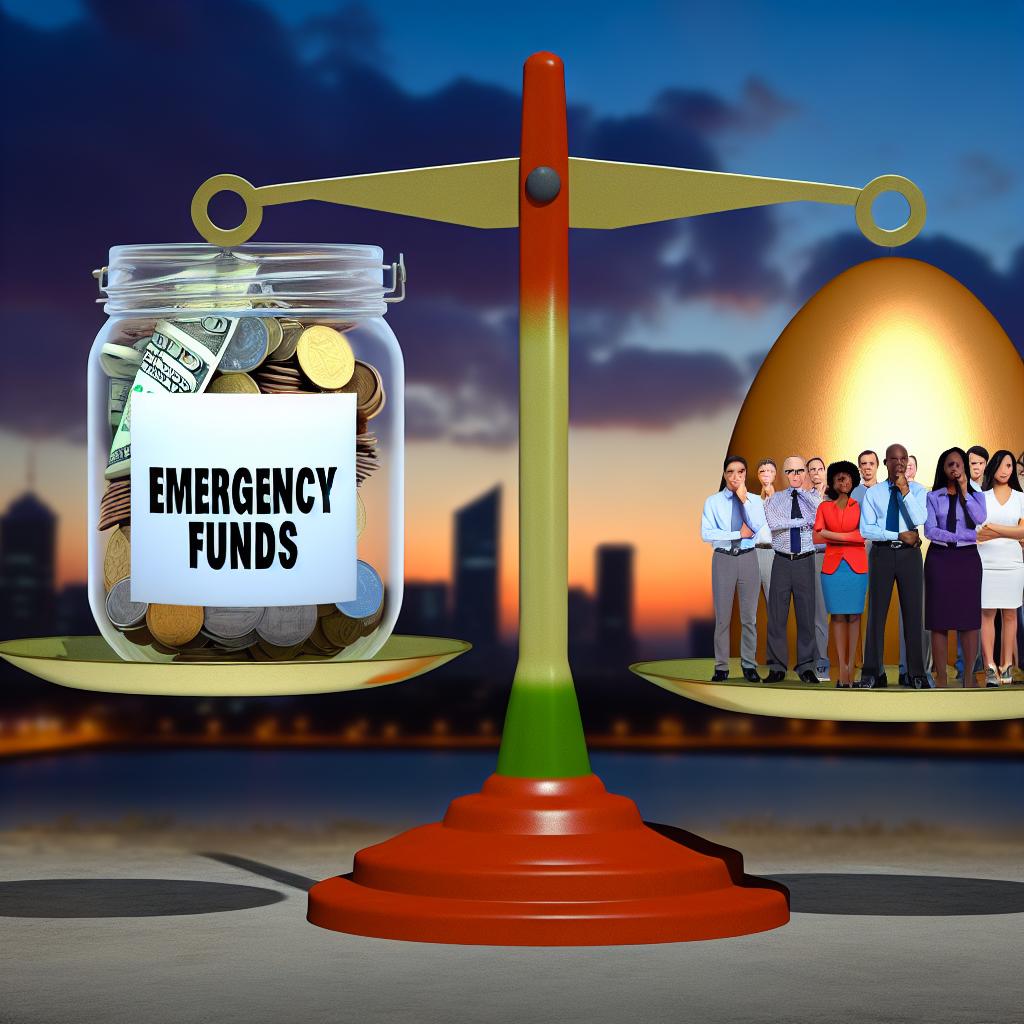Understanding Emergency Funds
An emergency fund acts as a vital financial buffer designed to safeguard against unforeseen expenses. These can include anything from medical emergencies to urgent car repairs or unexpected job losses. Setting up an emergency fund is a crucial part of personal financial planning. It brings stability and flexibility to your financial life. Most financial experts advise setting aside three to six months’ worth of living expenses. This money should be kept in an account that is both easily accessible and secure.
Why Emergency Funds Take Priority
Before you start investing, it is advisable to prioritize your emergency fund. Here are some reasons why this is a smart financial move:
1. Mitigates Financial Risk
Investing carries various risks, including frequent market volatility. If you don’t have an emergency fund in place, you might find yourself liquidating investments at disadvantageous times. This could result in financial losses. Having a well-funded emergency account offsets this risk. It ensures you have liquid assets on hand for unexpected circumstances.
2. Reduces Financial Stress
Having an emergency fund can dramatically lower your financial stress. The peace of mind that comes from knowing you have a backup in times of need allows you to make more strategic and informed investment choices. You won’t feel pressured to rush into decisions for immediate returns.
3. Avoids Debt Accumulation
Unexpected expenses often push people into debt when funds fall short. With an emergency fund, you can cover these unexpected costs. This means you won’t have to rely on credit cards or high-interest loans, thereby avoiding additional debt. A key component to maintaining long-term financial health is steering clear of unnecessary borrowing.
Building an Emergency Fund
Though building an emergency fund might seem challenging at first, it is certainly achievable with good habits and consistent effort.
Start Small, Aim Big
Begin by setting realistic savings goals. A good strategy is to commit a specific percentage of your income to savings each month. This can be more manageable and less daunting than aiming for a large lump sum all at once. You might also consider automating the process by setting up scheduled transfers to a savings account. This ensures regular contributions without requiring active attention every month.
Maintain Accessibility
The main aim of an emergency fund is to offer liquidity. Therefore, the money should be kept in an account that is easily accessible. Consider options like high-yield savings accounts. Although the returns might not be high, they guarantee that your funds are available when you need them, which is the primary requirement of an emergency fund.
The Bridge to Investing
Once you have sufficiently built up your emergency fund, you can start exploring investment opportunities. With this financial cushion in place, you will have the confidence to pursue investments geared toward long-term growth rather than immediate returns. You will also be better positioned to handle unforeseen costs, allowing your investments the time they need to mature.
For more comprehensive financial planning strategies and investing tips, you can consult reputable educational platforms or government-backed resources. These resources are excellent for gaining insights and developing a well-rounded financial plan.
In conclusion, prioritizing an emergency fund over direct investment is a fundamental step in establishing a robust financial plan. This financial safety net empowers you to handle unforeseen challenges efficiently, providing a firm foundation that allows you to approach investments with greater stability and assurance. Having an emergency fund supports your overall financial well-being, ensuring that your journey toward financial independence and stability is on solid ground.
This article was last updated on: November 21, 2025
